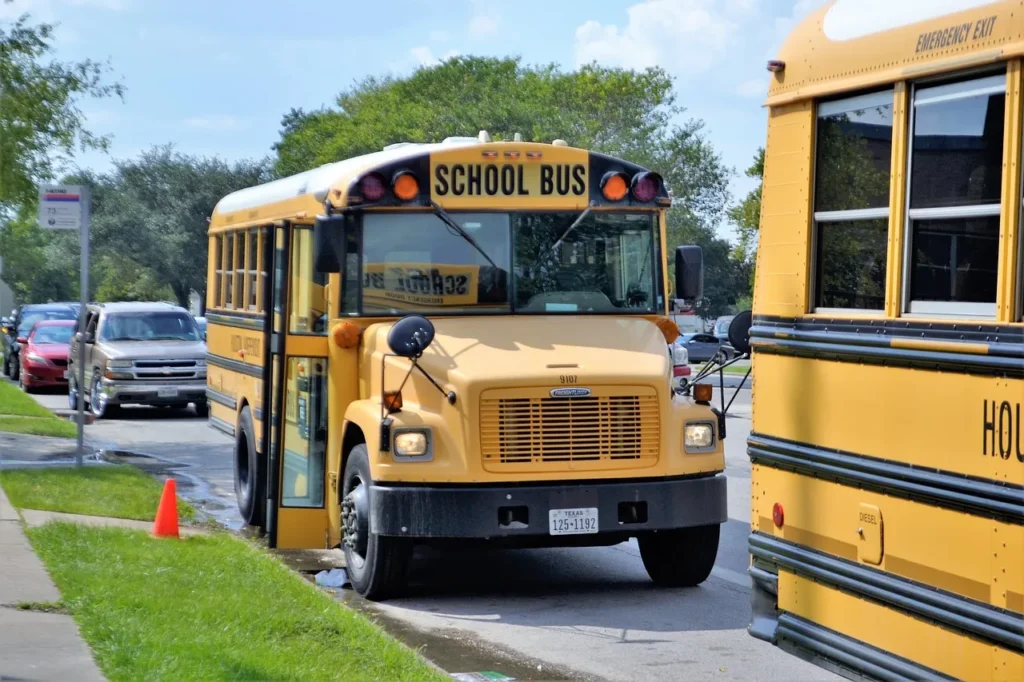
Nuvve, ComEd, and Resource Innovations Launch V2G Tech Pilot with Electric School Buses
Nuvve Holding Corp. (Nasdaq: NVVE), a leading provider of Vehicle-to-Grid (V2G) technology, has announced an exciting new pilot program in collaboration with Resource Innovations and ComEd, a utility serving over 4.3 million customers in northern Illinois. The program, which is set to run through the end of Q4 2025, aims to explore the potential benefits of bidirectional charging using electric school buses within ComEd’s service area. This innovative initiative will assess the environmental, societal, and grid impacts of integrating V2G technology into clean transportation systems.
Nuvve’s advanced V2G technology allows electric vehicles (EVs) to become more than just modes of transport—they can act as reliable, dispatchable, and monetizable energy storage assets. This approach offers a unique opportunity to help stabilize the electric grid, enhance energy efficiency, and create new revenue streams for EV owners.
According to Hamza Lemsaddek, Vice President of Technology and Astrea AI at Nuvve, the company’s ongoing innovation, exemplified by their recent groundbreaking AC V2G project with Exelon, continues to position Nuvve at the forefront of the rapidly evolving V2G sector. “This pilot will evaluate the value electric school buses can deliver to ComEd and its customers,” Lemsaddek added, highlighting the significant potential for these electric vehicles to serve as essential tools in creating a more sustainable and efficient energy landscape.
One of the key goals of this pilot program is to explore how energy stored in the batteries of electric school buses can be deployed to enhance grid stability and reduce energy costs. As more school districts in the region transition to electric fleets, this program will study the role of school buses as flexible energy resources.
The batteries in these buses, which are typically parked during non-school hours, can serve as energy storage that can be discharged to the grid during peak demand periods, providing critical support for the grid while reducing costs for local utilities and communities.
Three school districts, all of which are existing Nuvve customers within ComEd’s service area, are expected to participate in the pilot program in the coming months. By tapping into the vast potential of electric school buses, this initiative in northern Illinois will not only demonstrate the adaptability of Nuvve’s V2G technology but also offer the utility a valuable opportunity to evaluate how to harness the energy stored in vehicle batteries during times of peak electricity demand.
This approach could help reduce the strain on the electric grid, improve overall energy efficiency, and provide new financial benefits to the school districts and their communities.
Scott Vogt, Vice President of Strategy and Energy Policy at ComEd, expressed his enthusiasm for the V2G pilot, stating, “ComEd is excited to launch the Vehicle-to-Grid pilot program in 2025 as we continue with our mission of delivering best-in-class reliability and customer solutions to advance the equitable adoption of EVs here in northern Illinois.
” Vogt emphasized that the pilot program is a key component of ComEd’s ongoing efforts to support local school districts in their transition to cleaner, more sustainable transportation options. “V2G is the next frontier in our work to support local school districts on developing plans that will help lower emissions, upgrade their fleets, and implement the benefits of EVs and their related infrastructure affordably,” Vogt added.

The initiative comes at a time when ComEd is making substantial investments in beneficial electrification as part of the company’s broader sustainability efforts. Through a range of customer EV rebate programs and innovative pilot projects, ComEd is working to meet the growing demand for EVs and their infrastructure while advancing the state’s ambitious climate goals.
In fact, Illinois is committed to reaching 1 million EVs on the roads by 2030 under the state’s Climate and Equitable Jobs Act (CEJA), and ComEd’s programs are playing a central role in helping to achieve this target. To date, these programs have contributed to the addition of over 3,500 EV charging ports and 200 new EV fleet vehicles across the region, including a number of electric school buses.
As part of its ongoing commitment to supporting clean energy solutions, ComEd has also focused on making EV adoption more affordable for its customers. The company offers a range of rebates and incentives designed to lower the upfront costs of charging infrastructure and fleet projects, making it easier for businesses, schools, and communities to transition to electric vehicles. These efforts are helping to drive growth in the electric vehicle sector, with the number of EVs in Illinois more than doubling since last year, now exceeding 126,000 vehicles.
Resource Innovations, a leading provider of sustainable energy solutions, is playing a key role in the V2G pilot by leveraging its expertise in transportation electrification and energy management. Kelly Helfrich, Vice President of the Transportation Electrification Practice at Resource Innovations, noted, “This three-way collaboration exemplifies our commitment to innovative, forward-thinking solutions that address today’s energy challenges while preparing for a more resilient and sustainable future.” Resource Innovations’ involvement in the pilot program underscores its dedication to creating a cleaner, more efficient energy future through the integration of electric vehicles, renewable energy sources, and advanced energy management systems.
This pilot program is part of a larger trend of increasing collaboration among utilities, technology companies, and public entities to explore the many potential benefits of V2G technology. V2G is a revolutionary concept that enables electric vehicles to not only consume power from the grid but also return energy to it, creating a bidirectional flow of electricity.
This bidirectional charging capability is especially valuable for integrating renewable energy sources into the grid, as it allows excess renewable energy generated during off-peak times to be stored in EV batteries for later use. By leveraging the storage capacity of electric vehicles, V2G technology can help smooth out the fluctuations in energy supply and demand, making the grid more resilient and reducing the reliance on fossil fuels during peak periods.
The integration of V2G technology with electric school buses offers a particularly compelling opportunity. School buses are typically idle during the day and overnight, making them ideal candidates for serving as mobile energy storage units.
By tapping into the energy stored in the buses’ batteries, utilities like ComEd can reduce the need for expensive peaking power plants, which are typically used to meet high electricity demand. Additionally, this approach can help reduce greenhouse gas emissions and air pollution, as electric school buses produce no tailpipe emissions, offering a cleaner alternative to traditional diesel-powered buses.
In addition to its environmental and economic benefits, V2G technology also has the potential to create new revenue streams for school districts and other fleet operators. By allowing these entities to participate in grid services, such as demand response and frequency regulation, they can generate income by providing power back to the grid during times of high demand.
This financial incentive can help offset the upfront costs of purchasing electric school buses and charging infrastructure, making it more affordable for schools to transition to clean transportation.
In conclusion, the collaboration between Nuvve Holding Corp., Resource Innovations, and ComEd represents a major step forward in the quest to create a cleaner, more sustainable energy future. The V2G pilot program, which will evaluate the role of electric school buses in supporting grid stability and reducing energy costs, holds significant promise for transforming the way we think about transportation and energy.
By leveraging the power of electric vehicles to support the grid, this initiative has the potential to help meet critical energy needs, reduce carbon emissions, and create new economic opportunities for communities across northern Illinois. As the pilot progresses, it will undoubtedly serve as a valuable model for other regions and utilities looking to explore the benefits of V2G technology and drive the transition to a cleaner, more resilient energy future.

